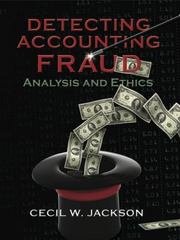Maligalig Company Comparative Statement of Financial Position December 31 (in Thousand Dollars) 2017 2016 2015 ASSETS Current Assets Cash and Cash Equivalents 91, 100 12,628 11,254 Short term Investments 193.230 12,000 12,000 Trade Receivables, net of $30,000 485,000 529,949 510,435 allowance Note Receivable - related party 12,325 18,941 21,543 Other Receivables 80,532 Inventory 212,515 252,567 252,567 Prepaid Insurance 7,500 7,500 7,500 Total Current Assets 1,001,670 914,117 315,299 Non-Current Asset Property, Plant and Equipment 209,330 209,330 209,330 Less Accumulated Depreciation 87.260 75,332 64,034 Total non-current Asset 122,070 133,998 145,296 TOTAL ASSET 1,123,740 1,048.115 960,595 LIABILITIES AND SHAREHOLDERS EQUITY Current Liabilities Accounts Payable 148.000 154,021 135,000 Accrued Expense 2,025 2,500 2,500 Notes Payable 22,325 21,300 21,750 Line of Credit 123,000 145,000 167,000 Current Portion of Long Term Debt 36,000 36,000 36,000 Total Current Liabilities 331,350 358.821 362,250 Non-Current Liabilities Long Term Debt 114,686 117,343 117,345 Total Liabilities 446.036 476.164 479,595 Shareholders' Equity Ordinary Share, $1 par value 100,000 100,000 100,000 Premium on Ordinary Shares 50,000 50,000 50,000 Retained Earnings 527,704 421,951 331,000 Total Shareholders' Equity 677,704 571,951 481,000 TOTAL LIABILITIES AND SHAREHOLDERS EQUITY 1, 123,740 1,048,115 960,595Maligalig Company Comparative Income Statement For the year ended December 31 (in Thousand Dollars) 2017 2016 Net Sales 2,013,225 1,986,456 Less: Cost of Sales 1,201,000 1,187,652 Gross Income 312,225 798,804 Less: Other Operating Expense 562,705 556,732 Operating Income 249,520 242,072 Less: Other Expense Interest 16,383 16,453 Other Expense 4,884 2,600 Net Income before Taxes 228,253 223,019 Less: Income Tax 22,500 22,300 NET INCOME AFTER TAXES 205,753 200,719 Requirement: 1. Compute the FINANCIAL ratios that measure Liquidity Current ratio Quick ratio Working capital Cash Ratio Leverage Degree of Operating Leverage Financial leverage Ratio Total Debt to Total Capital Ratio Debt to Equity Ratio Long Term Debt to Equity Ratio Debt to Asset Ratio Times Interest Earned Operating Activity Accounts Receivable Turnover Days Sales in Receivable Inventory Turnover Days in Inventory Profitability Earnings per share Return on Asset Return on Equity Operating Profit Margin Net Profit Margin 2. Analyze, interpret and draw conclusions based on the results of your computations








